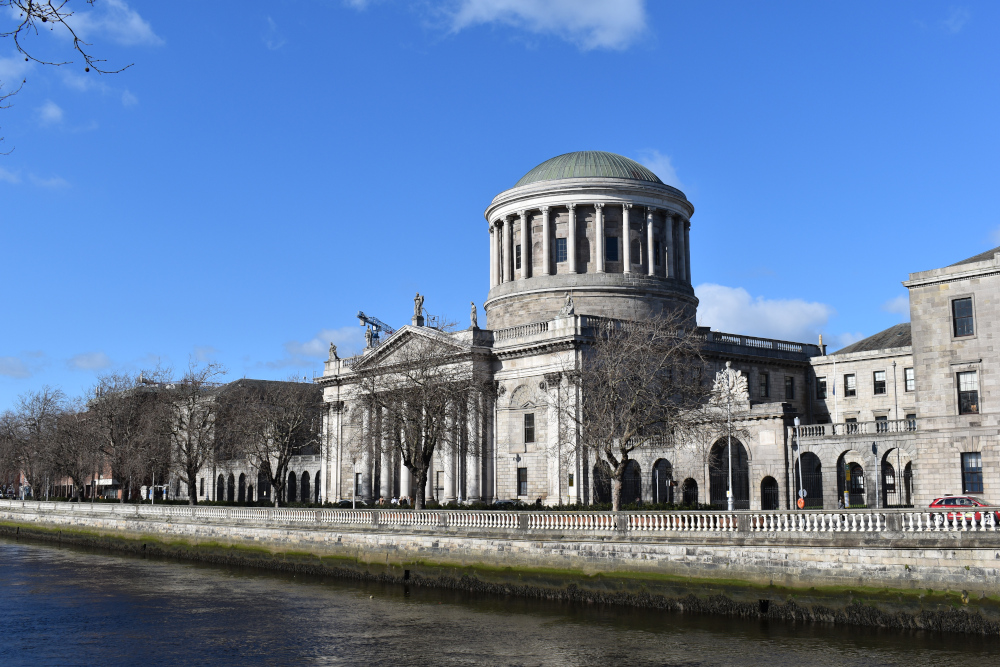Supreme Court: Conviction for ‘assisting an offender’ quashed

The Supreme Court has quashed Gary McAreavey’s conviction for offences pursuant to s.7(2) and (4) of the Criminal Law Act 1997, providing significant clarity in respect of the law of accessorial liability.

About this case:
- Citation:[2024] IESC 23
- Judgment:
- Court:Supreme Court
- Judge:Mr Justice Maurice Collins
Delivering judgment for the Supreme Court, Mr Justice Maurice Collins determined that “it would be unduly restrictive to interpret section 7(2) as requiring the prosecution to prove that A assisted P in the belief that P had committed a specific identified ‘other arrestable offence’. The better reading, in my view, involves reading ‘some other arrestable offence’ as an offence within the same category or of a similar nature to the offence actually committed by P and arising from the same transaction.”
The reasoning underlying the Supreme Court’s findings as to the admissibility of mobile phone traffic and location data is set out in greater detail in yesterday’s Irish Legal News report concerning Director of Public Prosecutions v Caolan Smyth [2024] IESC 22.
Background
On 10 May 2017, shots were fired from a Lexus vehicle at Mr James Gately at a petrol station on the Clonshaugh Road, seriously injuring him. Mr Caolan Smyth was identified as the gunman and was convicted of attempted murder by the Special Criminal Court.
The prosecution alleged that mobile data demonstrated that Mr McAreavey had communicated via his mobile phone with Mr Smyth and that he drove in convoy with Mr Smyth to the location where the Lexus was ultimately ‘burnt out’ using petrol supplied by Mr McAreavey. His purchasing of the petrol was evidenced by CCTV footage.
Mr McAreavey was tried for ‘assisting an offender’ under s.7(2) and (4) of the Criminal Law Act 1997, s.7(2) of which states inter alia that where a person has committed an arrestable offence, if any other person who knows or believes that he is guilty of the offence or some other arrestable offence without reasonable excuse does any act intending to impede his apprehension or prosecution, that other person shall be guilty of an offence.
The Special Criminal Court determined that while the evidence did not establish beyond reasonable doubt that Mr McAreavey knew or believed that Mr Smyth was guilty of attempted murder, the evidence did establish that Mr McAreavey knew or believed that Mr Smyth had committed an arrestable offence of some type when he helped Mr Smyth to destroy the Lexus, and so Mr McAreavey was convicted under s.7(2).
Mr Smyth’s conviction was upheld on appeal to the Supreme Court, which found that traffic and location data from a SIM card attributed to Mr Smyth, and which allegedly demonstrated movements consistent with that of the Lexus on the day of the shooting, were admissible in evidence against him despite legal argument to the contrary. Mr McAreavey appealed his conviction unsuccessfully to the Court of Appeal.
The Supreme Court granted leave to appeal concerning the admissibility of the traffic and location data into evidence in both Mr Smyth’s and Mr McAreavey’s cases, and as to the proper construction of s.7(2) of the 1997 Act in Mr McAreavey’s case.
Mr Justice Collins, giving judgment for the majority of the Supreme Court, set out in DPP v Caolan Smyth [2024] IESC 22 that the traffic and location data was admissible in evidence, and dismissed that portion of Mr McAreavey’s appeal.
The Supreme Court
Mr Justice Collins considered Mr McAreavey’s argument that on its proper construction, s.7(2) required the prosecution to prove beyond reasonable doubt that he acted with intent to impede the apprehension or prosecution of Mr Smyth while either knowing or believing him to be guilty of the offence of attempted murder or knowing or believing him to be guilty of some other offence within the same category/of the same nature.
Noting the classic ‘principle against doubtful penalisation’ as outlined in Inspector of Taxes v Kiernan [1981] IR 117, the court considered that more recent jurisprudence emphasises that a strict construction should not be employed to the exclusion of all other principles of construction, commenting that statutory construction is “a unitary exercise that, in all cases, has the same objective, namely the ascertainment of the intention of the legislature from the text adopted by it (which is the starting point and primary focus), read in its proper context…”
Having regard to, inter alia, Heather Hill Management Company CLG v An Bord Pleanála [2022] 2 ILRM 313, the court found that the state of the pre-existing law is “a relevant consideration in the exercise of statutory construction” and proceeded to evaluate the legal position prior to the 1997 Act.
Mr Justice Collins considered that the elements of accessorial liability depended on whether the assistance was rendered before or after the crime, referencing People (DPP) v Egan [1989] IR 681, People (DPP) v Dekker [2017] 2 IR 1 and People (DPP) v Madden [1977] IR 336 as concerning liability for assistance before the crime.
Noting that it was sufficient to establish that the accessory assisted “in the commission of the crime proved to have been committed by the principal, or the commission of a crime of a similar nature known to the accused to be the intention of the principal when assisting him”, the court remarked that none of the cases addressed the liability of an accessory after the crime or the requisite level of knowledge on part of the accessory of the specific offence actually committed.
The court considered commentary and case law from various jurisdictions, finding that under the “old law” prior to the enactment of the Criminal Law Act 1967, “when charging an accessory after the fact to felony it was necessary to specify both the particular felony which had been committed and that this was known to the accessory”.
Turning to s.7(2), Mr Justice Collins observed: “Whatever the precise meaning and scope of the words ‘or of some other arrestable offence’ in section 7(2), it necessarily contemplates that an accused may be convicted of an offence in circumstances where he or she did not know of the offence actually committed by the principal offender and instead believed that the principal had committed an offence other than the offence actually committed by them. It is therefore not plausible to suggest that section 7(2) was intended to apply the pre-existing law to a post-felony world.”
Having engaged in a further consideration of the authorities on the subject, the judge opined that s.7(2) presents “real difficulties of construction”, noting that “person (A) who assists the principal offender (P) who has committed arrestable offence X will be guilty of a section 7(2) offence if he or she provides that assistance knowing that P had committed that offence”.
The judge continued: “A will also be guilty if he or she assists P, even if A does not know that P had committed offence X, provided that A believed that P had done so (as for instance where A is told by P that he had committed offence X but does not have any independent knowledge of that fact).”
Finding that it is “also clear that A may be guilty of an offence under section 7(2) where he or she assists P in the (mistaken) belief that P has in fact committed ‘some other arrestable offence’” and that this “clearly refers to an offence other than the offence actually committed by P”, Mr Justice Collins reasoned that this “leaves for resolution the difficult issue of whether and to what extent A’s belief must relate to a specific ‘other arrestable offence’ or category of such offences”.
Disagreeing with the analysis of the Special Criminal Court, which suggested that an accused could be convicted under s.7(2) without identifying the ‘other arrestable offence’, the judge posited: “How can a court be sure that an accused believed… that the principal offender was guilty of ‘some other arrestable offence’ without first identifying what that offence was?”
Mr Justice Collins considered that the Special Criminal Court appeared to have attributed liability to Mr McAreavey on the basis of his ‘constructive belief’ and not by reference to any knowledge of the offence committed by Mr Smyth and/or the factual circumstances surrounding the offence, wondering that if a jury had been instructed, “without having some specific offence in mind, how could a jury be satisfied, beyond a reasonable doubt, that the offence met the threshold of seriousness (i.e. that it was an arrestable offence)?”
Concluding that such an interpretation would give s.7(2) an “essentially arbitrary character” necessitating “an essentially speculative exercise”, this “would appear difficult to reconcile with fundamental requirements of a trial in due course of law for the purposes of Article 38.1”, he said.
Disagreeing with the prosecution’s position, Mr Justice Collins determined that “it is not sufficient for the prosecution to prove that the accused knew or believed that that person was guilty of some unspecified and unidentified offence of sufficient gravity as to constitute an arrestable offence”.
The judge concluded that “it would be unduly restrictive to interpret section 7(2) as requiring the prosecution to prove that A assisted P in the belief that P had committed a specific identified ‘other arrestable offence’. The better reading, in my view, involves reading ‘some other arrestable offence’ as an offence within the same category or of a similar nature to the offence actually committed by P and arising from the same transaction. The reference to ‘some other arrestable offence’ thus covers ‘the situation where the accused knows the facts or some of the facts of the actual offence which has been committed by the principal offender, but believes that those facts constitute a different offence from the offence in truth committed’…”
Conclusion
As the SCC did not find that Mr McAreavey knew the facts or some of the facts of the actual offence committed but believed that those facts constituted a different similar offence, the Supreme Court quashed his conviction.
Director of Public Prosecutions v Gary McAreavey [2024] IESC 23





